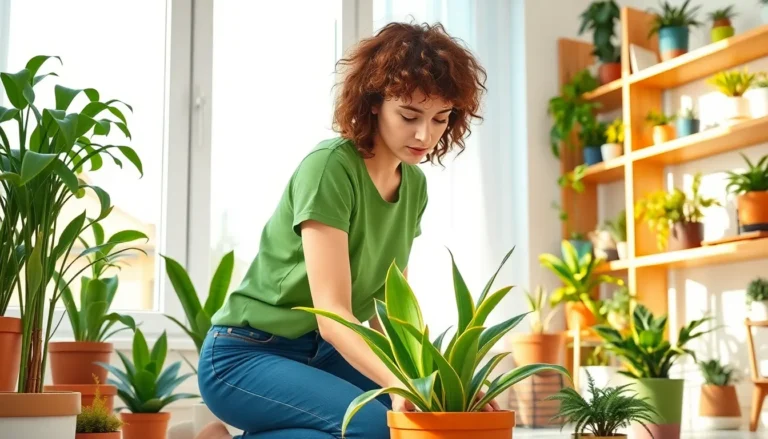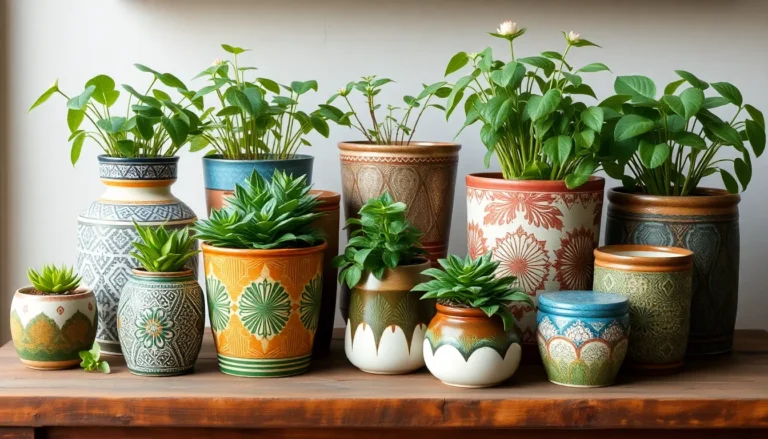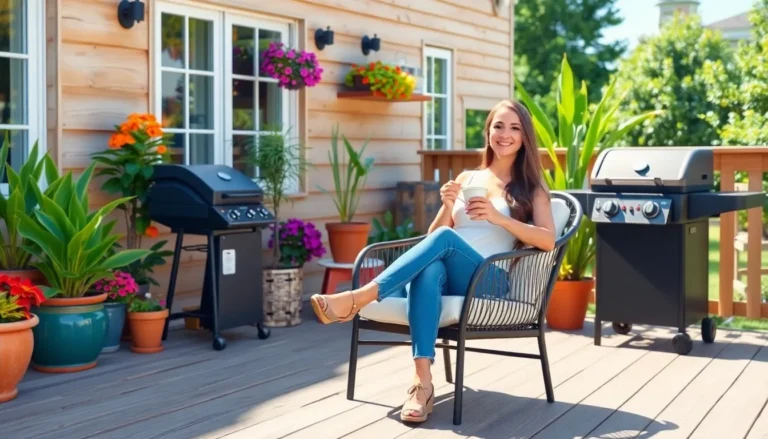House plants are like pets that don’t chew your shoes or require daily walks. For those stepping into the green-thumb world, they offer a perfect blend of beauty and low maintenance. Imagine transforming your living space into a lush oasis without the stress of high upkeep.
Starting with house plants can be a thrilling adventure filled with vibrant colors and fresh air. Whether you’re looking to impress your friends or simply want to brighten your home, these leafy companions are here to help. Plus, they won’t judge you for binge-watching your favorite series on a Saturday night.
Dive into the world of house plants and discover which ones are perfect for beginners. With just a little guidance, anyone can cultivate a thriving indoor garden that brings joy and a splash of nature right into their home.
Table of Contents
ToggleBenefits Of House Plants For Beginners
House plants provide numerous advantages for those new to indoor gardening. They contribute positively to air quality and elevate the aesthetic of living spaces.
Improved Air Quality
Indoor plants significantly enhance air quality by absorbing carbon dioxide and releasing oxygen. They filter pollutants such as formaldehyde and benzene, promoting healthier environments. Keeping house plants can reduce airborne toxins, leading to fewer respiratory issues and increased well-being. Research indicates that certain plants, like the spider plant and peace lily, excel in purifying air. Aim for a variety of these plants to maximize air quality benefits in every room.
Enhanced Aesthetic Appeal
Plants add visual interest and vibrancy to indoor spaces. Colorful foliage and unique shapes create focal points, making rooms feel more inviting. Furthermore, they offer versatility; options range from small succulents to tall fiddle leaf figs. Decorating with plants can transform dull corners into thriving areas, enhancing overall ambiance. Incorporate a mix of textures and heights in arrangements for a dynamic look. House plants not only beautify environments but also contribute to a serene atmosphere.
Choosing The Right House Plants
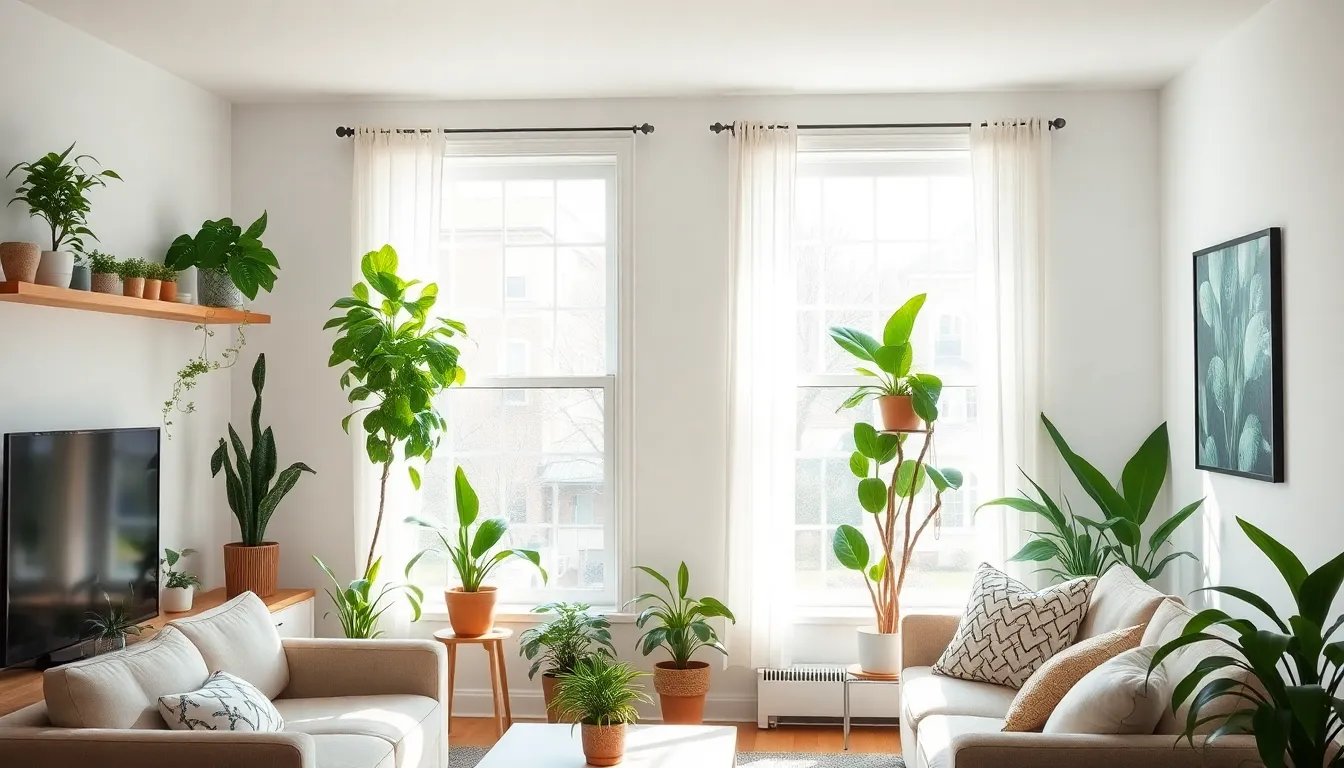
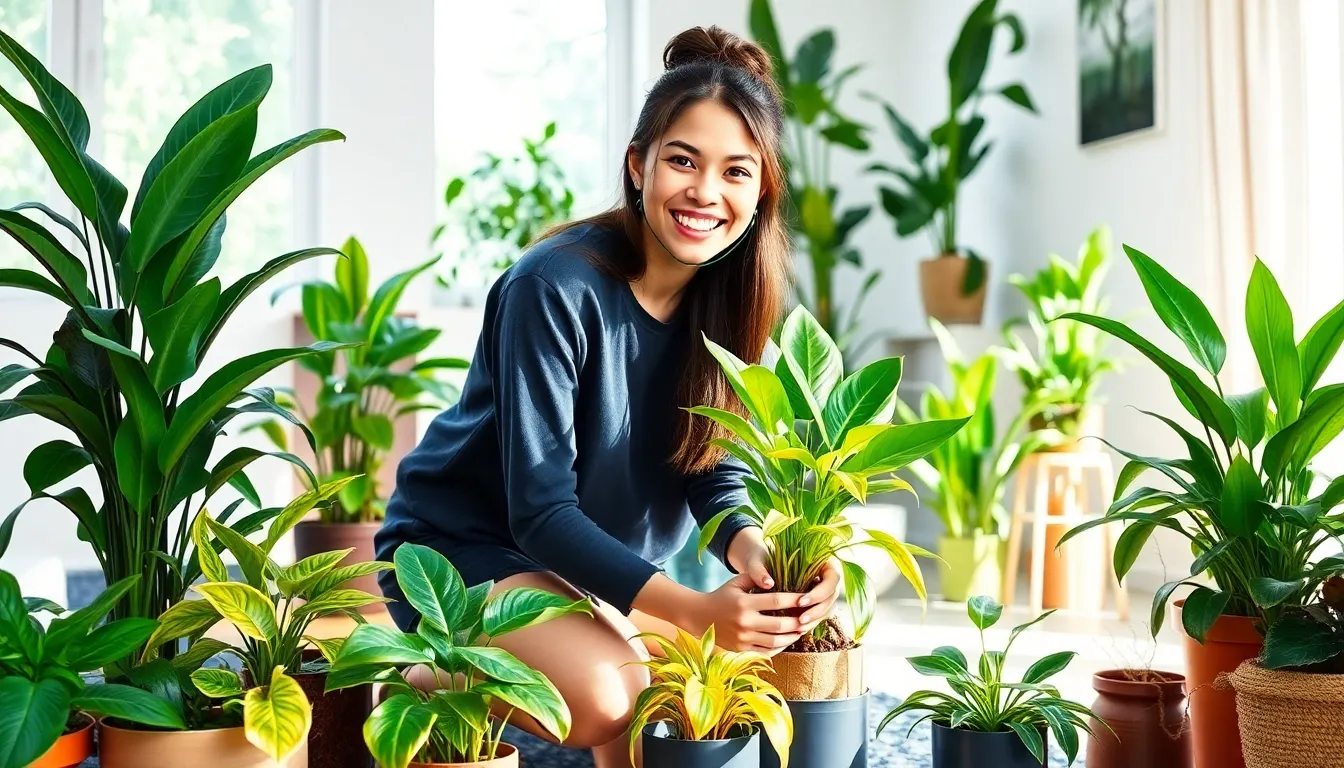
Selecting house plants involves identifying varieties that fit individual lifestyles and environments. New plant owners often seek options that require minimal care and provide maximum impact.
Low-Maintenance Options
Beginner-friendly plants can thrive with little attention. Popular choices include pothos, which adapts to various light conditions, and snake plants, known for their resilience. ZZ plants perform well with infrequent watering. These selections foster a successful introduction to houseplant care. Low-maintenance varieties encourage confidence, motivating newcomers to explore more options over time.
Considerations For Space And Light
Assessing available space is crucial before bringing home plants. Compact areas lend themselves well to smaller species, such as succulents or spider plants. Additionally, light conditions influence plant health significantly. Bright, indirect light suits favorites like peace lilies, while low-light conditions favor pothos. Evaluating both space and light ensures appropriate selections that enhance home aesthetics and promote thriving growth.
Essential Care Tips For Beginner Plant Owners
Beginner plant owners can easily provide the right care for their house plants with a few essential tips. Focusing on watering, light, soil, and fertilization sets the foundation for a thriving indoor garden.
Watering Guidelines
Watering varies based on plant species. Check the top inch of soil; it should feel dry before adding more moisture. Most house plants prefer to dry out slightly between waterings, helping prevent root rot. Overwatering remains a common mistake, so using pots with drainage holes can ensure excess water escapes. For specific plants like pothos, a bi-weekly watering routine suffices, while cacti might need it less often, even once a month.
Light Requirements
Every house plant has different light needs. Bright, indirect light suits many popular beginner plants, such as snake plants and spider plants. A south-facing window often provides adequate light, but some plants also thrive in lower light conditions. Observing plant growth will indicate if light conditions require adjusting; yellowing leaves may signal too much light, whereas leggy growth often suggests too little. Positioning plants in optimal light helps achieve vibrant growth.
Soil and Fertilization
Choosing the right soil affects plant health significantly. A high-quality potting mix supplies necessary nutrients while allowing proper drainage. For plants like peace lilies, a mix that retains some moisture benefits them. Fertilization is essential but should occur at appropriate times. During the growing season—spring and summer—liquid fertilizer may be applied every 4-6 weeks. In contrast, most plants require less fertilization in fall and winter, conserving energy during dormancy.
Common Mistakes To Avoid
Beginners often face challenges when caring for house plants. Recognizing common mistakes can lead to a more successful plant ownership experience.
Overwatering
Overwatering remains a prevalent issue for many new plant owners. Excess moisture can lead to root rot, which damages plants significantly. It’s crucial to check the top inch of the soil for dryness before watering. Most house plants prefer to dry out slightly between waterings. Additionally, using pots with drainage holes can help excess water escape. Monitoring the moisture needs of specific plants provides better results. Adjust watering routines based on the season, as growth often slows in winter.
Choosing Inappropriate Locations
Choosing the wrong locations for plants is another frequent error. Low light areas can hinder the growth of light-loving varieties. Positioning plants too close to heating or cooling vents causes unnecessary stress. Before placing a plant, consider its light requirements as well as humidity levels. Providing adequate space around plants helps with air circulation, promoting healthy growth. Regularly observe how light changes throughout the day to determine ideal spots. Moving plants as needed keeps them thriving in their environment.




